Q&A: Addressing Barriers to Social Care in Pharmacies
Pharmacies face time, workload, and sustainability challenges when integrating social care, but support and reimbursement can make these efforts viable.
While pharmacies are well positioned to address health-related social needs (HRSNs), sustainability and workload remain major challenges. Integrating community health worker (CHW) roles requires leadership, reimbursement, and ongoing training. Time constraints, competing priorities, and multiple patient touchpoints make adoption difficult, but structured support can help pharmacies overcome these barriers.
Drug Topics recently sat down with Christopher Daly, PharmD, MBA, BCACP, clinical associate professor at the University at Buffalo, and David Jacobs, PharmD, PhD, associate professor at the University at Buffalo, authors on a recent study that examined a community pharmacy health-related social needs model, to discuss challenges that pharmacies may face when screening patients for social needs in a busy retail setting and how those might be addressed.1
Drug Topics: What challenges do pharmacies face when screening patients for social needs in a busy retail setting, and how might those be addressed?
David Jacobs, PharmD, PhD: I think the challenges are a long list. It's going to [take] time. Some of the challenges around social needs [are] that it's not a quick fix. Sometimes these are things that take a lot of time to help and support, especially if you get into some needs around utilities, housing, and safety. Time is a challenge, as with anything. It's also the knowledge and confidence and the training in order to address those needs. How do you overcome the timing? Providing the resources,...foundation, and the leadership necessary to successfully integrate the program [is essential]. You need to be adaptable along the way. It's not going to be perfect when you get going—each pharmacy or each setting is going to be slightly different on how they do it and how the staff works together in order to overcome some of the challenges.
Christopher Daly, PharmD, MBA, BCACP: To give an example of how a busy pharmacy might stage this, we base it on the increase in encounters and touchpoints that a pharmacy would have over many other health care providers. That's been well published and documented. Your pharmacist is highly accessible, so it may be a patient might not be ready to come forward. It may take one time to show, maybe a screener near the register to show that this pharmacy has resources around food, but not engaging at that time. Then next month a delivery driver is out at the individual's house, and they're delivering the medications, and they may not have the monies needed for the medications, and many pharmacies will work with patients all the time to do that. As those ideas and triggers come to the surface, [there may be] a delivery driver who's trained and has that ability to know that there may be a community health worker going to help out who may be able to inquire and [say], “We noticed you've been struggling in these areas. Are you aware of these services we have?” After those multiple touchpoints, you would have an individual be able to refer back to that community health worker who's trained in the pharmacy, and then at a designated time they're able to reach out to the patient, have them fill out a screening and consent form, and perform that referral. We've had many pharmacies stage it in that way, where it's become more...team based, and that helps to break up the workload.
Drug Topics: Is there anything else you wanted to say?
Daly: I would say this is an important set of services that a pharmacy can [perform], and as we look at disparities among our patients, we need to have tools available to us to be able to engage other members of the team overall. If we're committed to team-based holistic patient care, community pharmacy can play a role in empowering them to do so through these mechanisms. It is really one of the more successful pathways forward.
Jacobs: Community pharmacy can play a major role. I think this paper, this project, provided an example, but it's just one example of many that are out there of the role that community pharmacy can play to improve patient care. I wish that a lot of those other projects that we know about could be published and provided broadly, whether it be in the health equity space, whether it be health-related social needs, or other types of practice transformation. We are seeing time and time again that community pharmacy has [the] ability,...the support, the knowledge, [and] the breadth nationwide to make a broader impact on population health and the care of our patients.
READ MORE:
Are you ready to elevate your pharmacy practice? Sign up today for our
Reference
1. Daly CJ, Iqbal DN, Chen E, et al. Implementing a community health worker model to address health-related social needs in a community pharmacy network: a pragmatic evaluation. J Am Pharm Assoc. Published online July 26, 2025. doi:10.1016/j.japh.2025.102490
Newsletter
Pharmacy practice is always changing. Stay ahead of the curve with the Drug Topics newsletter and get the latest drug information, industry trends, and patient care tips.






































































































































